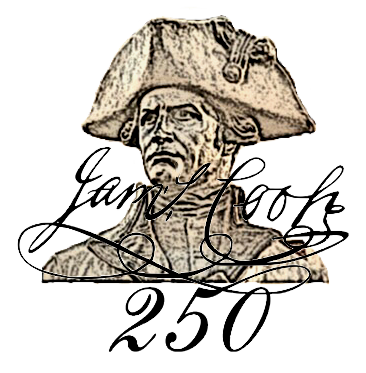Dr Daniel Solander was a Swedish natural scientist who sailed on the Endeavour alongside Sir Joseph Banks and James Cook on their expedition to Tahiti and returned via Aotearoa New Zealand and Australia in 1768–71.
On the voyage, Solander collected and recorded thousands of botanic specimens, becoming well respected for his elegant and concise descriptions.

Solander and Banks Bag Fish and Fowl. by John McLean
Paradise Lost brings together the work of 10 contemporary New Zealand based artists responding to the life of the Swedish botanist and his contribution to James Cook’s first voyage to the Pacific.
His Excellency, Henrik Cederin, Ambassador of Sweden to Australia said, ‘I am delighted to be here today to open the exhibition: Paradise Lost – Daniel Solander’s Legacy. We are pleased to be able to do this with the Australian National Maritime Museum. We very much value the longstanding relationship that we have developed over the years, and which now has resulted in this undertaking.’
Artists featured in this intimate exhibition are: Dagmar Dyck, Alexis Neal and John Pusateri from Auckland; Sharnae Beardsley and Jo Ogier from Christchurch; Jenna Packer and Lynn Taylor from Dunedin; Tabatha Forbes and John Mclean from New Plymouth and Michel Tuffery MNZM from Wellington.
Each artist brings a unique vision and perspective to the events of 1769 and 1770, collectively they put flesh to Daniel Solander’s many facets, including his scientific credentials in botany and his cross-cultural awareness.
Paradise Lost toured New Zealand in 2019 and in 2020 The Embassy of Sweden together with Solander Gallery, Wellington is delighted to bring the exhibition to Australia.
The exhibition forms part of the museum’s Encounters 2020 program to mark the 250th anniversary of the 1770 voyage along the east coast of what is now Australia. For this iteration of the exhibition the New Zealand works have been joined by exquisite historic coloured engravings of specimens collected by Banks and Solander from the National Maritime Collection of Banks’ Florilegium.
The interpretations of the Florilegium adds an Australian narrative to the exhibition and provides an opportunity to reflect not only on the European science of 1770 but also on the deep cultural knowledge of Australia’s First Nations peoples. These engravings have been gifted to the Collection by Dr Eric and Mrs Margaret Schiller.
About Daniel Solander
Daniel Solander was born in 1733, in a small Swedish town. He was described as a short and stout man with small eyes, a jovial face and fair complexion. Solander was generally well liked, combining humility, charm, absentmindedness and social skills. He studied natural history in Uppsala, where he became the favourite student of Carl Linnaeus, who created the modern system of naming species of plants, insects, birds, fish and animals.
In 1760, Solander travelled to London to give instructions in the Linnaean system and settled there, working at the British Museum. But it was his meeting with Joseph Banks that would transform his destiny. They soon formed a strong friendship that led Banks to invite him to join the scientific staff of the Endeavour expedition.
The Endeavour left the port of Plymouth in 1768 to reach Aotearoa New Zealand in October 1769, followed by Australia in April 1770. Another eminent person present onboard the ship played a crucial role for Solander and for the Endeavour expedition: Tupaia, the Rai’atean navigator who travelled with the expedition from Tahiti. In the course of the journey, the two men came to form a strong bond working side by side in the European encounter with Pacific worlds.
During the voyage Solander and Banks collected around 17,000 plant specimens, including 900 new species from Australia and 350 new species from Aotearoa New Zealand. Solander also recorded important ethnobotanical information, including many Maori names. Tupaia played a crucial role in these efforts. Their collective records of these species remained largely unpublished for many years.
Once collected, the botanical samples were dried and pressed between sheets of paper on board the ship. As paper was expensive and rare at the time, Solander and Banks resorted to using pages of Milton’s epic poem Paradise Lost to press the specimens.
Today, this collection continues to tell the story of a lost time, providing a vital connection with the plants that were growing in Aotearoa New Zealand and Australia before the massive changes caused by the European settlement.
Solander returned to London and resumed his post at the British Museum where he continued to work with Banks but died suddenly in 1782, leaving Banks devastated and putting an end to their plans to jointly publish their work.
As well as his significant botanic work, Solander designed a light-proof, dust-proof collection box during his career as naturalist at the British Museum. His invention has become known as a Solander box and is still in use in art galleries, libraries and museums around the world for the storage of artworks, prints and drawings.
View the story on the Australia National Maritime Museum website.
